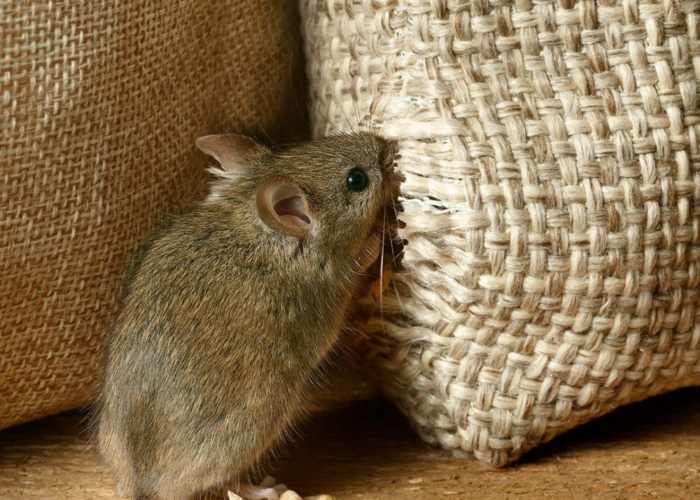If you have wicker furniture in your garden, you may be concerned about the risk of it being damaged by rodents. Do mice eat wicker furniture? And how to keep them out of patio furniture? In this article, we will address these questions and provide some effective solutions to protect your wicker furniture from mice.
Contents [hide]
1. Do mice eat wicker furniture?
Mice are not inclined to eat wicker as a food source. They are more likely to gnaw on and damage outdoor furnitures and cushions for nesting material or as a result of their natural gnawing instincts. Wicker is typically made from woven natural materials such as rattan, reed, or bamboo.
There are several reasons that can explain this behavior of mice, but primarily, it is due to their need to sharpen their teeth. Mice have continuously growing incisors throughout their lives, so they need to gnaw on hard materials to keep their teeth from becoming too long and sharp.
Wicker furniture has a fibrous structure, similar to the plants that rats use as nesting material. Therefore, mice can also destroy your furniture to make their nest.

2. How to keep mice from chewing outdoor cushions and furnitures?
Keeping mice out of patio furniture requires a combination of preventive measures and strategic solutions. Here are some effective ways to prevent mice from making your patio furniture their nesting or feeding grounds:
- Regular Garden Cleanup: Perform regular garden cleanup to eliminate potential hiding spots for mice. Mice are inclined to seek refuge in areas with debris, dry leaves, weeds, or unnecessary objects. Removing these from your garden helps minimize food sources and hiding places for mice.

- Use Natural Mouse Repellents: Utilize natural mouse repellents. Some plants, herbs, or essential oils have strong odors that mice dislike. You can plant these around the garden or sprinkle them on furniture. Examples include mint, cinnamon, chili, garlic, chamomile, lavender, peppermint oil, orange oil, and cinnamon oil.
- Employ Electronic Mouse Deterrent Devices: Consider using electronic mouse deterrent devices. These devices emit high-frequency sounds that are unpleasant for mice but inaudible to humans. Place these devices near your garden furniture to create an area that mice find inhospitable.
- Use Traps or Rodenticides: Employ traps or rodenticides as a last resort if the above methods prove ineffective. Place traps or rodenticides in areas where you notice signs of mice, such as droppings, fur, or bite marks. Exercise caution when using these methods to avoid harm to humans or other animals.
These measures collectively create an environment that is less attractive to mice, reducing the likelihood of them approaching or nesting in your garden furniture.
3. Conclusion
In conclusion, while mice may gnaw on wicker furniture, they do so primarily in search of nesting material and wearing down their teeth rather than as a food source.
By understanding this behavior and taking preventive measures such as sealing entry points, keeping the area clean and clutter-free, and using deterrents, you can minimize the risk of damage to your wicker furniture by mice.
If you have any further questions, don’t hesitate to send thanhcongcraft an email us at info@thanhcongcraft.com or message us at WhatsApp: +84967485411. Hope to serve you soon! Best regard!


